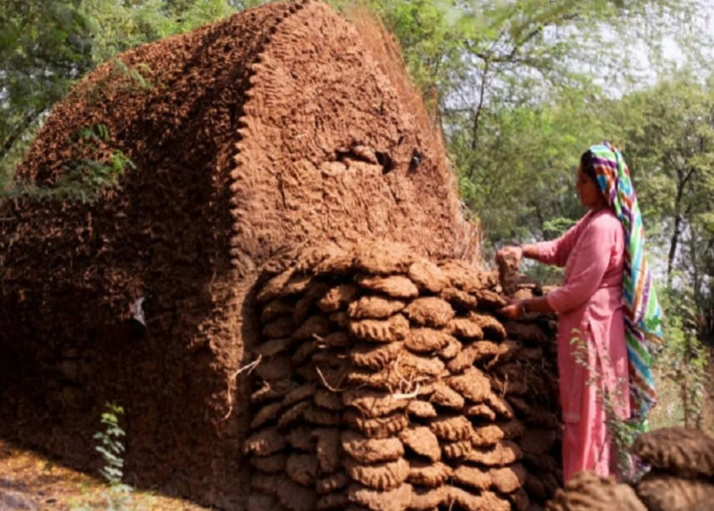What’s the science of cow dung & Cooling? Behind the viral Delhi professor video
A viral video shows DU Principal Dr. Pratyush Vatsala applying cow dung on a classroom wall. But is there a science behind this traditional method?

In rural India, cow dung has long been used to plaster walls and floors. It’s more than tradition, it naturally cools interiors, insulates the home, and even has antimicrobial propertities. Used as plaster, cow dung doesn’t absorb heat like cement. Instead, it acts as an insulator, keeping homes up to 7 degrees cooler in summer and warmer in winter.
The mixture was used? A breathable blend of cow dung, clay, neem leaves, gypsum, and lime. It absorbs zero heat and reduces indoor temperatures enough to eliminate the need for an AC. Meet Dr. Shivdarshan Malik, the man bringing cow dung back into construction. A former professor, Dr. Malik, saw his childhood farmland disappear under layers of concrete. He decided to revisit traditional wisdom and create sustainable building materials inspired by India’s past. He built two eco-friendly innovations: Vedic Plaster and Gocrete Bricks.
Subscribe to our YouTube channel- https://www.youtube.com/@NavbharatNewsIndia/featured

Gocrete Bricks, made from cow dung and local soil, reduce heat entry by up to 70%. Combined with Vedic Plaster, they create breathable homes that are cooler, cleaner, and greener. There’s even more science behind cow dung than you’d imagine. For starters, it forms a crack-resistant, smooth layer on walls and floors. It also helps hold bricks together, reduces dust, regulates indoor moisture, and keeps pathogens at bay thanks to its antimicrobial properties.
Do Read-










